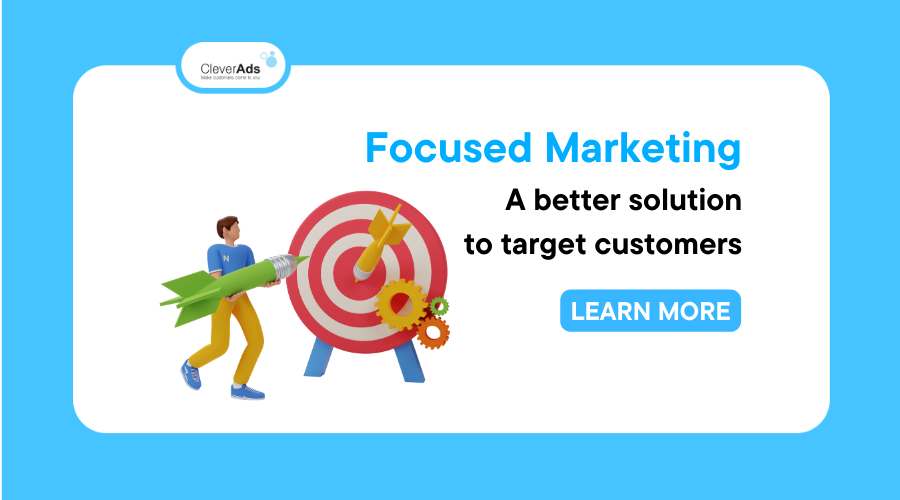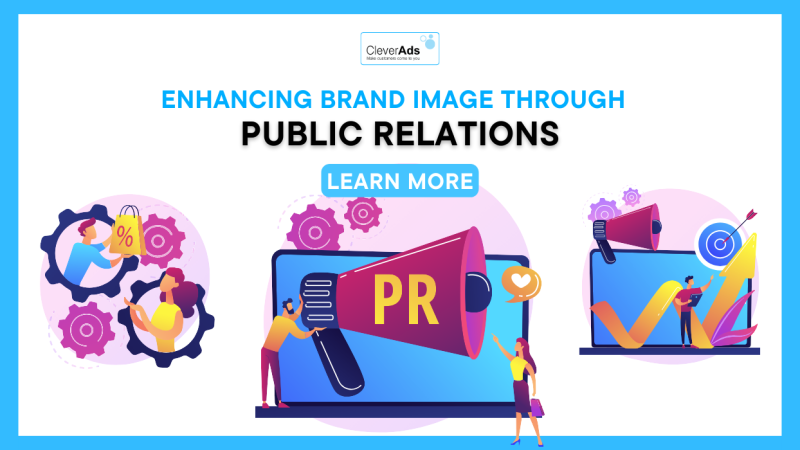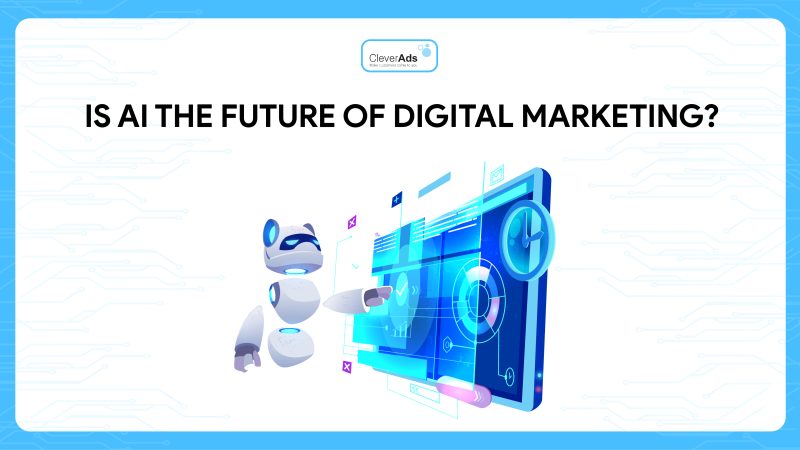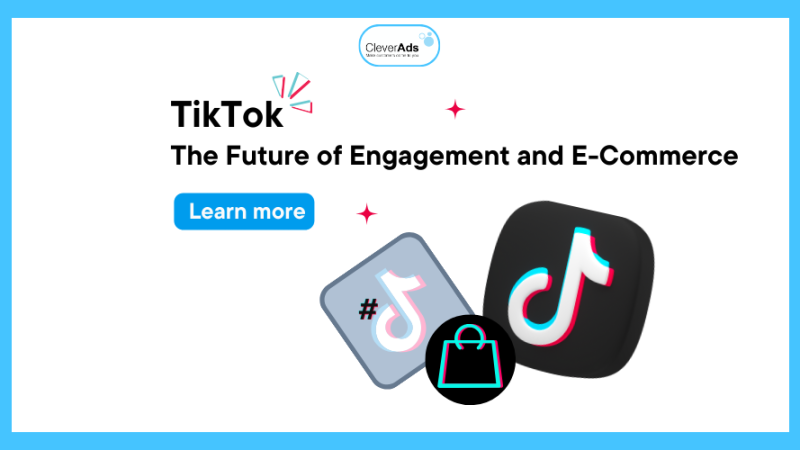Focused Marketing – A better solution to target customers

Businesses of any size need to determine their target audience. The main element of successful focused marketing is putting the target customer at the centre of all planning and decision-making. To understand how to focus marketing? Let’s learn important information about Focused Marketing with CleverAds right here!
1. What is Focused Marketing?
Focused marketing (also known as Centralized marketing) is the implementation of marketing actions on a segment or a small market segment that the business wants to target. Businesses can create competitive advantages by mobilizing and putting all their efforts into:
A group of customers
Specific products
Certain geographical markets
Instead of diversification, centralized marketing allows businesses to put all their efforts into a single point. The ultimate goal is to successfully reach a limited group of consumers or market segments.
Read more: What is market segmentation? 5 steps to effective market segmentation
2. How does Focused Marketing help increase sales?
With the specific nature of focusing in-depth on a definite customer segment, focused marketing strategies can help businesses achieve faster and more optimal sales.
Moreover, by focusing all of your marketing budgets on a definite audience that is targeting one or two specific sales channels, businesses not only save a lot of money and use the budget more efficiently but also achieve better results and faster speed.
Usually, there are a lot of businesses that implement concentrated marketing very early, right when the business starts a business. Implementing centralized marketing is also applied by businesses throughout the development process. And after businesses gain a market share or succeed in a certain segment, they begin to use other types of strategies for expansion purposes. This will help businesses minimize risks that may occur in product trading.
3. Implement a Focused Marketing strategy
A focused marketing strategy is the most suitable master plan for small and medium-sized businesses. And this strategy is also applied by businesses who want to cover the entire market in the first stage when entering a large market. These enterprises usually only produce certain types of products, not mass production. The customer audience is either a fixed file or geo-segmented.

Read more: What is a marketing strategy? Notes when building a Marketing strategy
A focused marketing strategy consists of three sub-strategies. Each business can use one or two sub-strategies to strive to excel in the industry.
3.1 Market penetration
Market penetration is the practice of increasing market share for a companies new products/services or old products/services that have been established in new markets through marketing efforts.
This strategy is often applied at the beginning of the product life cycle or can be acknowledged as the product introduction phase. At this time, customers may not know about the products/services that the business has launched and sales are still low. Marketing resources focus on the most extensive marketing campaigns.
This involves achieving a high share of the existing market for the products being manufactured in the enterprise.
3.2 Market development
Make a mention of the product business for the new market. Includes all strategies and plans of a business to identify and develop existing products into new markets. This strategy aimed at new prospective customers who does not in the current segment.
It is the most common method of pursuing more sales channels.
For example, adding online sales on social platforms and e-commerce sites or expanding to foreign markets.
3.3 Product development
With this strategy, focus on creating new products to distribute in existing markets or improving the existing product to serve needs and satisfy consumers.
The key product development is to focus on customers, take actions to satisfy customers, and increase buying behaviour to create profits for businesses.
Product development is not a one-day story but requires a methodical strategy as well as a specific roadmap. Each stage requires different methods to generate more revenue for the business.
4. Benefits and risks of a Focused Marketing strategy
Any strategy has its advantages and disadvantages. However, when implementing a centralized marketing strategy, businesses need to be careful, come up with wise and reasonable plans to take full advantage of the advantages and at the same time limit the disadvantages.
4.1. Benefits of Focused Marketing
A focused marketing strategy brings broad benefits.
Thanks to an exceptional focus on a market area, the enterprise can simply gain a definite position in the selected market, creating a monopoly and competitive advantage through a clear understanding of the needs and expectations of customer wants.
The design and supply of products that achieve an exceptional reputation for a specialized product exploit the advantages of specialization in production, distribution and sales promotion activities. This often helps businesses achieve high-profit margins.”
4.2 Risk of Focused Marketing
The risks businesses may face when applying a concentrated marketing strategy can include:
- High cost due to small-scale production.
- The target market segment or portion may not exist or substantially reduced due to constantly changing demand.
- Only businesses with strong competitive power can decide to enter that target market.
Read more: Focused Marketing Strategy: 5 things Marketers need to know
5. Examples of businesses optimizing Focused Marketing
Focused marketing targets small, discrete segments that are often unknown to customers outside of those groups. The most obvious example is:
Starbucks – More than good coffee

Starbucks is a famous coffee brand in the world, aimed at marketing to the adult customer segment aged between 25 and 40 years old.
They usually people with relatively high incomes, professional careers and focus on social welfare. Starbucks is successful today because they always try to understand and prioritize customer concerns first.
The company not only brings customers delicious coffee but also has a mission to become the third place customers visit after the company and their families.
Rolls-Royce – Not selling cars, only selling experiences of luxury

Spirit of Ecstasy Centenary Collection Cars with Rolls-Royce are like to search engines with Google. They use them to attract customers, but this is not the key source of profit. Google profits from advertising, and Rolls-Royce sells the experience of luxury.
With Rolls-Royce being a luxury car brand, they only target very small groups of people. That group of people are people with very high income, rich, looking for luxurious and classy experience.
Louis Vuitton – French luxury fashion brand

The target customers of the Louis Vuitton brand are high-class and upper-class customers.
Therefore, Louis Vuitton uses a premium price policy to affirm the quality of its products. On different occasions, the company will launch collections and product lines that are limited in quantity and sold only for a fixed time.
This makes their products more “hunted” than ever because customers and fashion lovers understand that they will receive more than just a regular handbag or jewellery, more than that, is separateness.
6. Conclusion
Focused marketing plays a crucial role in the start-up and development of a business.
Conducting a focused marketing strategy will help businesses narrow their attention to a target audience segment. Create the best customer outreach strategy that creates satisfaction and earns loyalty. Since then, the company has retained customers and created a solid position in the industry.
Hopefully, through the article, readers will have a deeper understanding of centralized marketing as well as focused marketing strategies.


